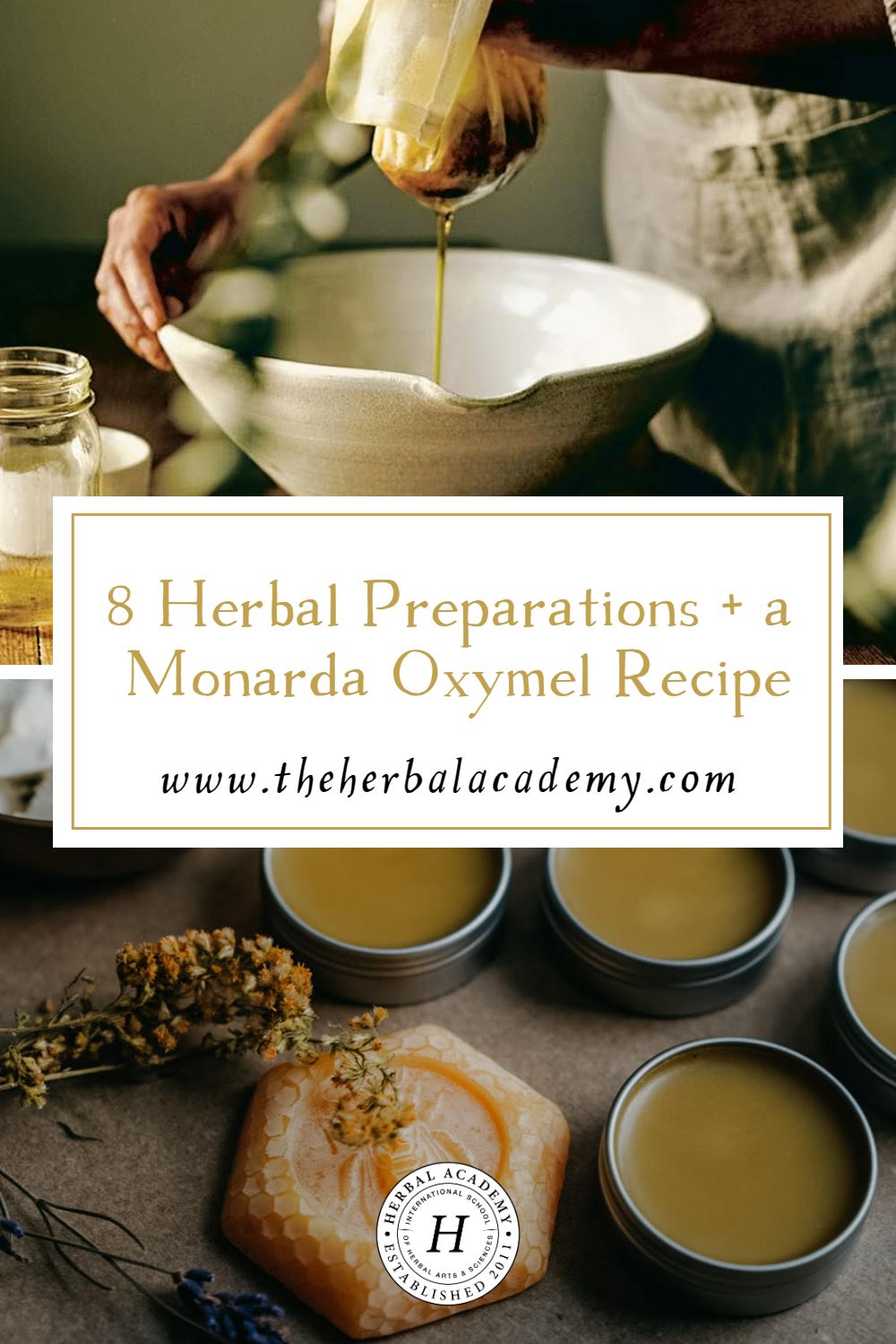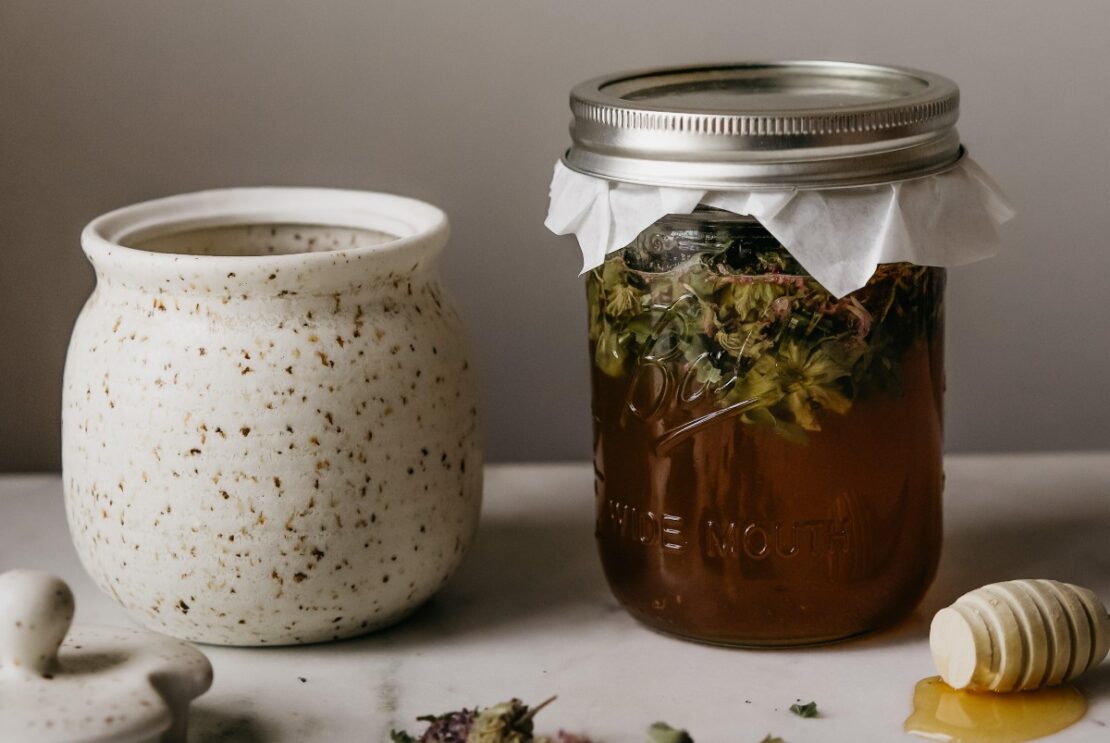
8 Herbal Preparations + a Monarda Oxymel Recipe
The following excerpt outlining eight herbal preparations and a Monarda Oxymel recipe is taken from the book, Our Kindred Home by Alyson Morgan, and is reprinted with permission. Our Kindred Home takes you on a journey through the heart of cyclical, seasonal living. It’s a heartfelt collection of the recipes, rituals, and plants that Alyson’s family turns to in her quest to live in greater kinship with the natural world. It features generationally-loved and herbal-infused recipes, like her mother’s New Year’s soup joumou + her children’s favorite nettle pasta.
“The secrets are in the plants. To elicit them you have to love them enough.”
-George Washington Carver
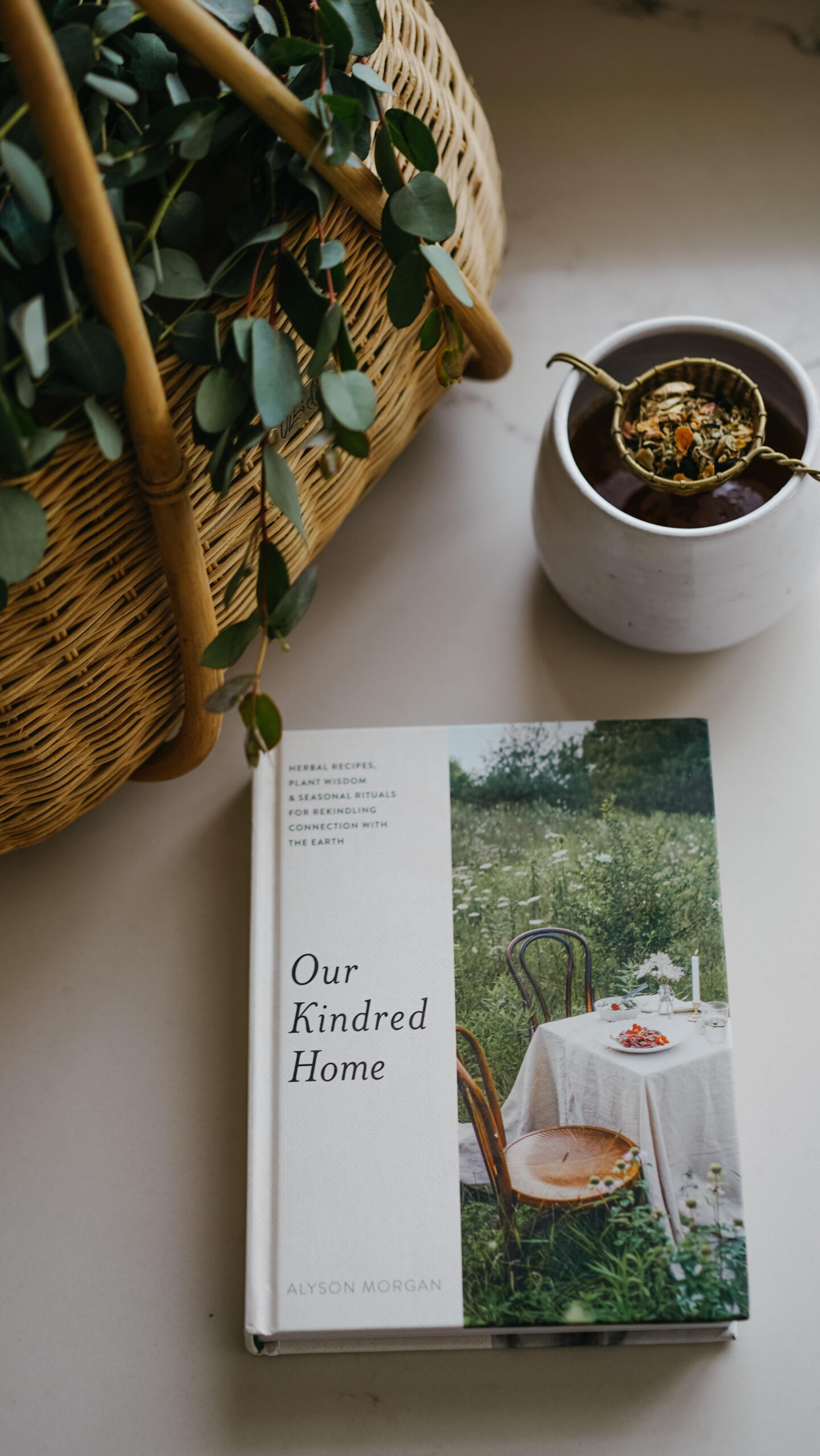
It is not necessary to use complex preparations and elaborate formulas to work with plants. In African American folk medicine as well as Indigenous American remedies, often only one or two herbs were used at any given time for simple preparations like teas, infusions, decoctions, and an oxymel recipe. They also made vinegars, syrups, salves, juices, baths, steam inhalations, and poultices. We can incorporate plants for healing simply in our everyday lives. Among all the complicated things in our modern life, nourishment and connection can be simple. Here I explain some of the most used herbal methods that serve as a foundation in my kitchen and my apothecary like the oxymel recipe I share below. I try to infuse herbal goodness into our food in any way I can think of.
Infusions
Infusion refers simply to a water-based preparation. Think steeping herbs in water for a cup of tea or a tisane, just for longer amounts of time. An infusion is a preparation used for the flowers, leaves, and stems of a plant. Cold-water infusions are for plants like marshmallow root or hibiscus. Sun tea is an infusion from the rays and warmth of the sun.
To make an infusion, bring water to a boil; for 1 ounce of dried herbs you need 1 quart water, or for 1 tablespoon of fresh herbs use 8 ounces water. Crush the herbs in your hand or a mortar and pestle, and place them in a teapot, mug, or jar. Pour the correct amount of boiling water over your herbs, and cover the vessel to catch the volatile oils. Steep for 5 to 15 minutes for a tea. For longer, nourishing infusions, steep for up to 8 hours. Herbs like bitter chamomile need to infuse for only a few minutes. Strain the infusion in a strainer, compost the herbs, and honey to taste, if desired, and enjoy. I refrigerate my longer, nourishing infusions for up to 24 hours. Generally, nutritive plants, like violet leaf, raspberry leaf, marshmallow, or milky oats, are used for infusions.
Nettle Infusion
Nothing compares to the bright, green goodness of a nettle infusion. After a long winter, often characterized as a period of stagnation and depletion, the first spring nettles are an absolute gift from the earth. I often use the fresh tops in cooking, as they are tender, yet as the plant grows the leaves become more tough. I dry the larger leaves to use in infusions, herbal steams, and soups. This nettle infusion is my go-to when I need a boost. Water best extracts the nutrients from the dried cell walls of a plant. To my nettle infusions, I like to add mint, apple mint, or peppermint for flavor and digestion, in addition to oat straw and fresh slices of ginger. Strain and enjoy at room temperature or cold over ice.
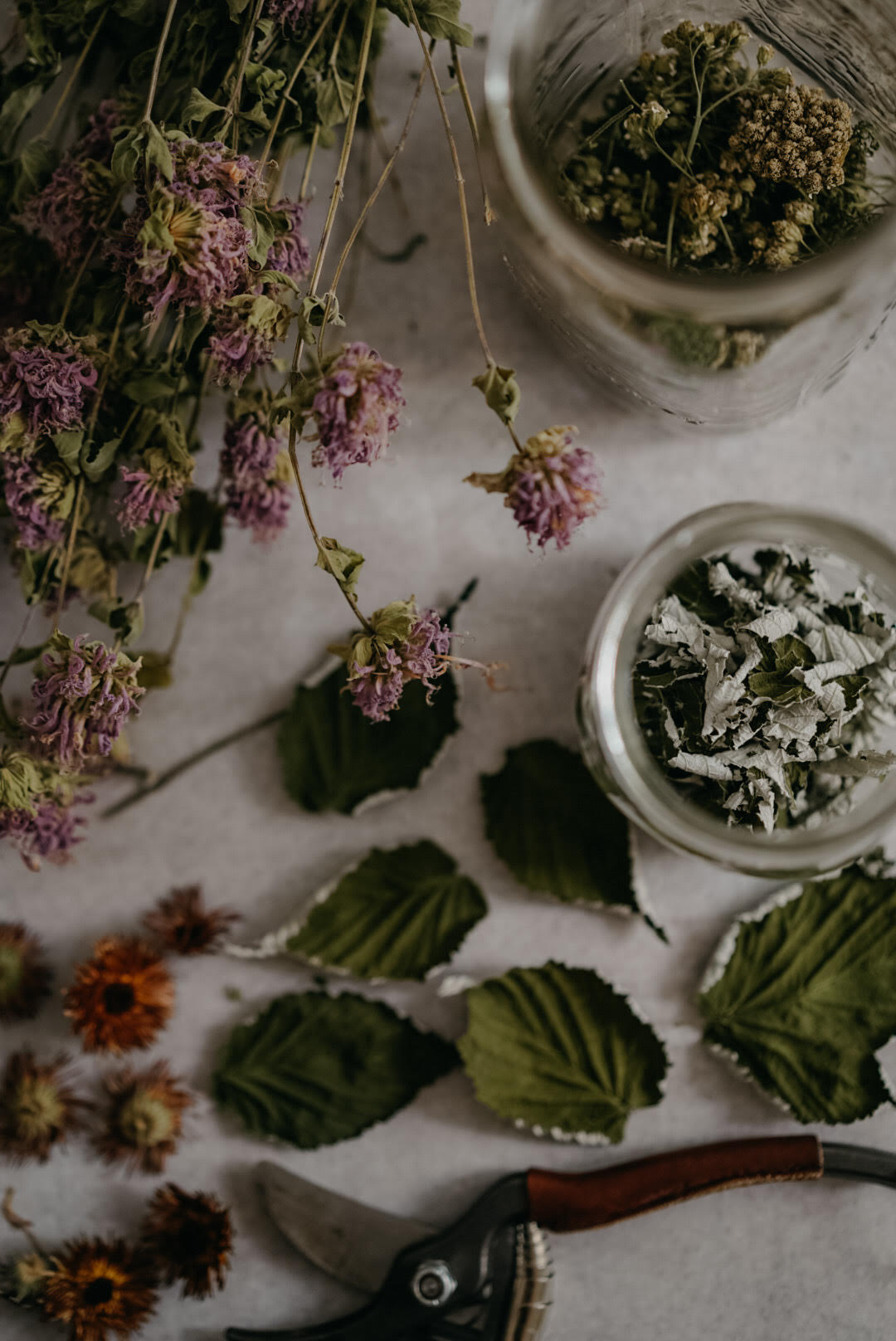
Decoctions
A decoction is a slower and longer simmer of bark, roots, or seeds. This method extracts constituents from tougher plant materials, like cinnamon or dandelion root. Decoctions can be ingested or used topically by soaking a cloth in the decoction for a compress. Another use for a decoction is as an herbal bath or soak. Applying an herbal tea topically is an effective and ancient way of accessing the beneficial properties of an herb.
For maximum benefit, drink 3 cups a day. For acute conditions, drink ½ cup every 30 to 60 minutes, totaling 4 cups, as needed.
To make a decoction, use 1 ounce of dried herbs per 1 quart water. Combine the herbs and water in a saucepan, cover, and bring to a boil. Lower the heat and simmer, covered, for 20 to 40 minutes. Remove from heat and strain. Drink or store in the refrigerator for 24 to 48 hours.
Honey
I adore using honey as a medium to draw out herbal constituents. The honey itself is full of wonderful properties, from being antibacterial to helping the body fight local allergens, and I try to use local, raw honey. I love to capture sweet florals in honey or to complement richer flavors like sage or thyme. Herbal honeys are often an element in drinking vinegars, added to winter teas for medicinal benefits, or used as a base for other herbal preparations, like elixirs or syrups. Electuaries are herbal honeys made with powdered herbs that are mixed right in, no straining necessary.
Vinegars
Infusing plant matter in vinegar is similar to an alcohol tincture, in which the menstruum (solvent) pulls out the plant constituents. I love using herbal infused vinegars as the base for salad dressings, for drinking vinegars, for cleaning, and for hair rinses.
Raw apple cider vinegar (ACV) helps promote digestion by encouraging growth of good bacteria. ACV supports the immune system, inflammation, and digestion. Topically, it can be used for cuts, abrasions, skin funguses, and rashes. Herbal vinegars are best made with dried herbs for the most potent extraction. The juice from fresh herbs can water down the vinegar before it can extract the plants’ constituents. You can use crushed dried herbs or powdered herbs for more potent herbal vinegars. If you are looking for a simpler culinary vinegar, fresh herbs can be used.
To make a vinegar, chop the dried herb or grind it in a mortar and pestle. Fill a clean jar a quarter of the way with the herb. Pour apple cider vinegar over the herb until the jar is full. Either use a plastic lid or place a square of parchment paper over the jar and secure it with a metal lid. Store in a cool, dark place, shaking it daily, for 14 days or half a moon cycle: full moon to new moon or new moon to full moon. Strain the vinegar through cheesecloth into another clean, sterilized jar. Label and store it in a cool dark place or refrigerate for up to 6 months.
Take 1 teaspoon of vinegar up to three times a day when needed, added to water, tea, or oil (to make a vinaigrette).
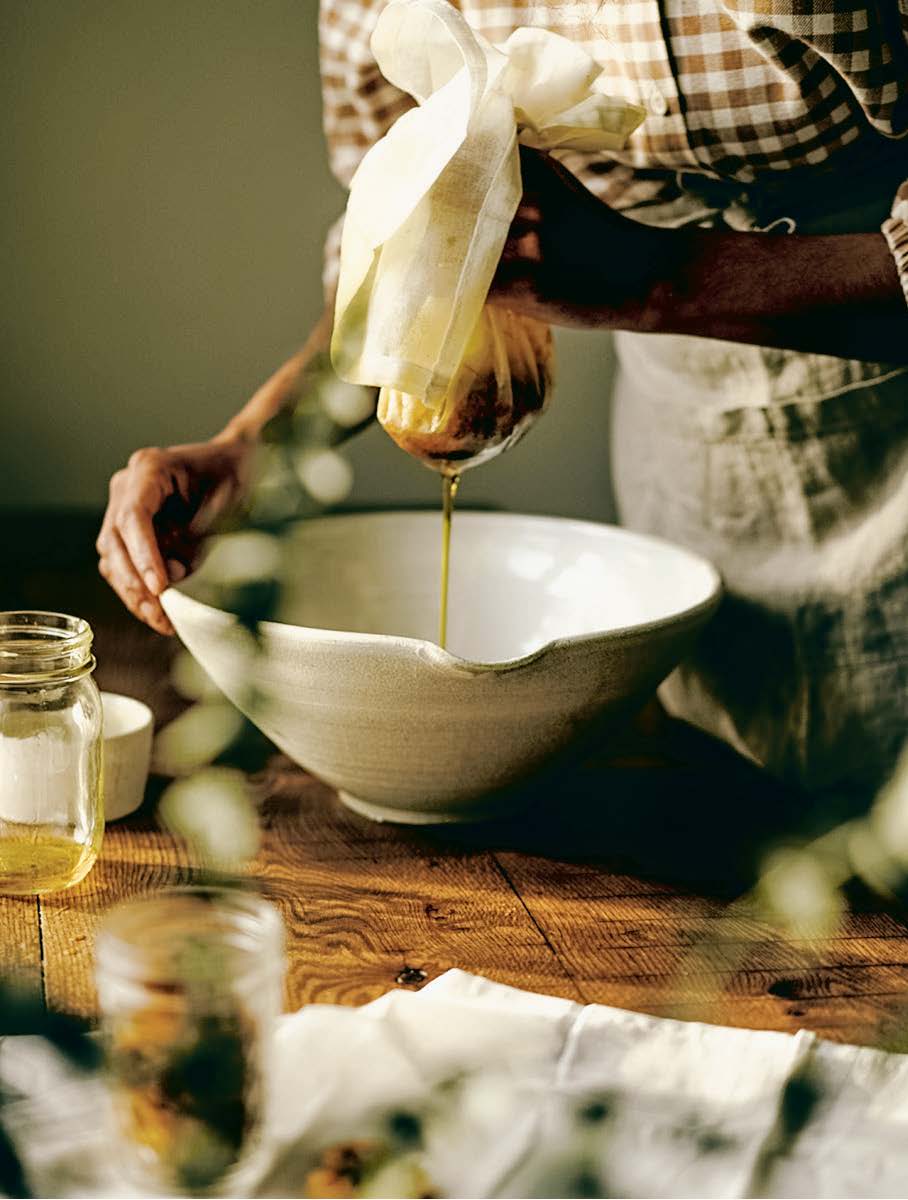
Herbal Infused Oils
Infused oils are perfect for self-massage, a nourishing act of self-care. Herbal oil can help relieve tension and inflammation and lubricate the joints. Our skin is also our largest organ, and we can absorb herbal oil through our skin. What we put on our bodies matter. If you’ve ever carried self-hatred or self-doubt, self-massage can help you appreciate yourself in an intentional way. It is also a lovely way to connect with a partner, loved one, or child. My favorite oil for little ones is chamomile or lavender; rub it on the bottoms of their feet to calm them before bedtime.
There are two ways to make herb-infused oils.
Folk Method
Use 1 ounce of dried herbs to 12 fluid ounces of the carrier oil of your choice.
Grind the herbs well in a mortar and pestle or crumble them with your hands. Fill a dry sterilized jar halfway with the herbs. Pour the carrier oil over the herbs to the top, making sure all the herbs are covered. Use a clean spoon to stir the mixture thoroughly. Cover with a square of wax paper and a metal lid, or use a plastic lid. Shake the oil in between your hands infusing it with your healing intention.
Place the jar in a dark, warm spot for 4 to 6 weeks—or a full lunar cycle from new moon to new moon. Every few days, shake the jar. Decant the oil by straining it through an organic muslin or cheesecloth and strainer, squeezing the remainder of the oils out. Pour the oil into a clean, sterilized jar to let it settle. Strain again a few days later and pour the infused oil into an amber jar and label it. Store in a cool, dark place. Herbal oils can remain potent for 6 months to a year.
Stovetop Method
Place a small amount of water in the bottom of a double boiler; you do not want water boiling up and touching the oil. (Alternatively, use a large pot that easily holds a smaller bowl or pot.) Using 1 ounce dried herbs to 12 fluid ounces of your choice of carrier oil, combine them in the smaller pot. Set the pots over very low heat for 4 to 8 hours. Remove the pots from the heat, let the infused oil cool, decant into a dry sterilized jar as described in the folk method above, and label. The oil can also be infused in a slow cooker or a heat-safe jar in a few inches of water, placing a few lids under the jar to protect it from direct heat.
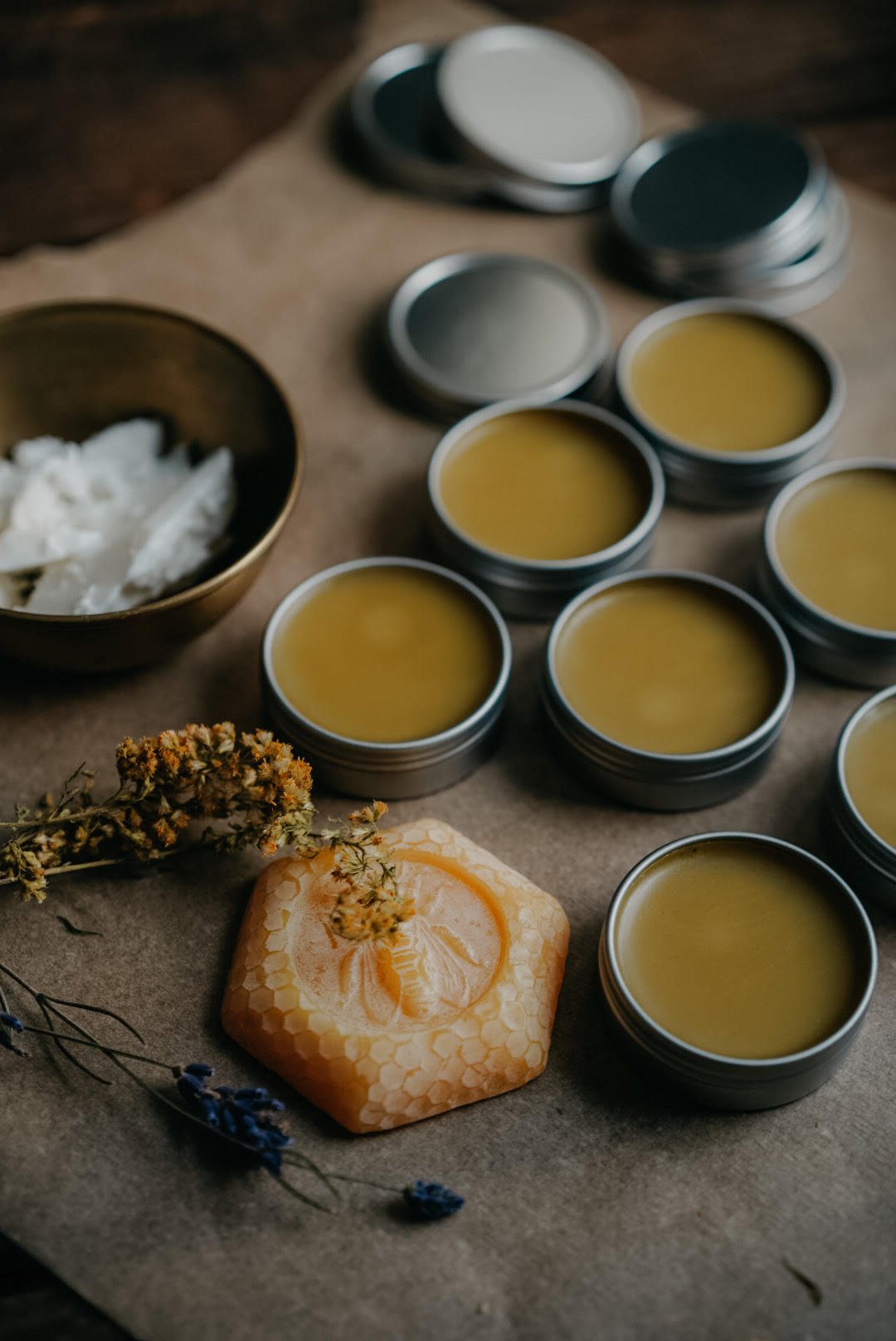
Salves
Salves are a balm made from an herbal-infused carrier oil and beeswax. I often use cocoa butter or shea butter to create a softer consistency. Salves can be used for dry winter skin, bruises, burns, muscle aches, relaxation, and wounds. They are one of my go-to remedies.
Syrups
Essentially, a syrup is an herbal infusion or decoction that is reduced and added to honey or another sweetener to extend its shelf life, for example, mix a syrup from one or two parts decoction to two parts sweetener. You can also add alcohol to make it more shelf stable. The most popular syrup is elderberry.
Poultice
This traditional preparation of herbs crushed in water is made into a paste, then spread on a cloth and applied directly to the body. It is commonly used with hot water and a hot cloth to ease pain and relax tissues. A cold poultice can be applied to burns and inflamed skin conditions. Commonly used poultice herbs include plantain for bee stings and bug bites, violet leaf for sunburns, or yarrow and calendula as a vulnerary for rashes and skin eruptions.
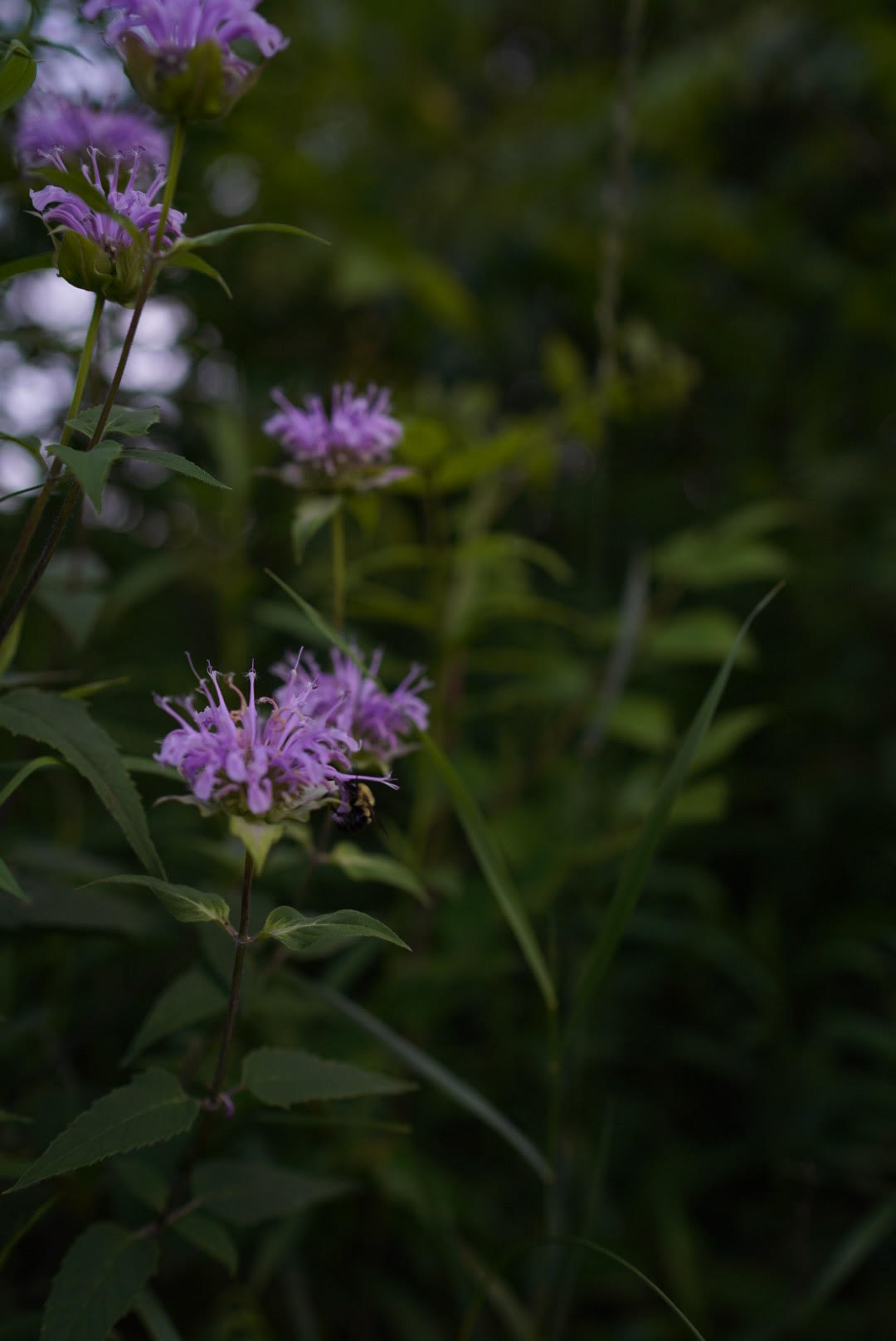
Monarda (Monarda fistulosa)
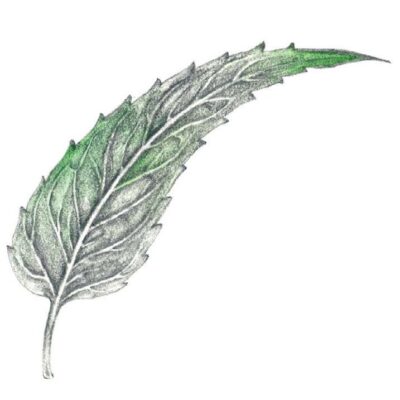 Bee balm flowers in late July, dotting our prairie and often covered in buzzing, contented bumblebees. A native plant to the Americas, it was a primary healing plant of many Indigenous tribes. Used by the Wisconsin Ho-Chunk in a sweat bath, its aroma eases cold symptoms via steam inhalation.
Bee balm flowers in late July, dotting our prairie and often covered in buzzing, contented bumblebees. A native plant to the Americas, it was a primary healing plant of many Indigenous tribes. Used by the Wisconsin Ho-Chunk in a sweat bath, its aroma eases cold symptoms via steam inhalation.
Also known as wild oregano or wild bergamot, bee balm is important ecologically to grow and cultivate in North American gardens because it is a native species and a friend to the bees. Monarda’s leaves contain thymol, a compound found in thyme and oregano that is antibacterial and stimulating, making it a favorite in our family for winter teas that are comforting for colds and flus. It soothes fevers, headaches, and digestive issues. The blooms and the leaves are spicy and a delicious, pungent addition to pesto and salads and use in the oxymel recipe below. Monarda didyma has a milder flavor than the spicy M. fistulosa.
As a flower essence, it is used for grounding, energy moving, clearing, connecting to the collective, and helping one clear out old stories and belief systems. It opens the way to plant new intentions and rewrite storylines for the heart and mind.
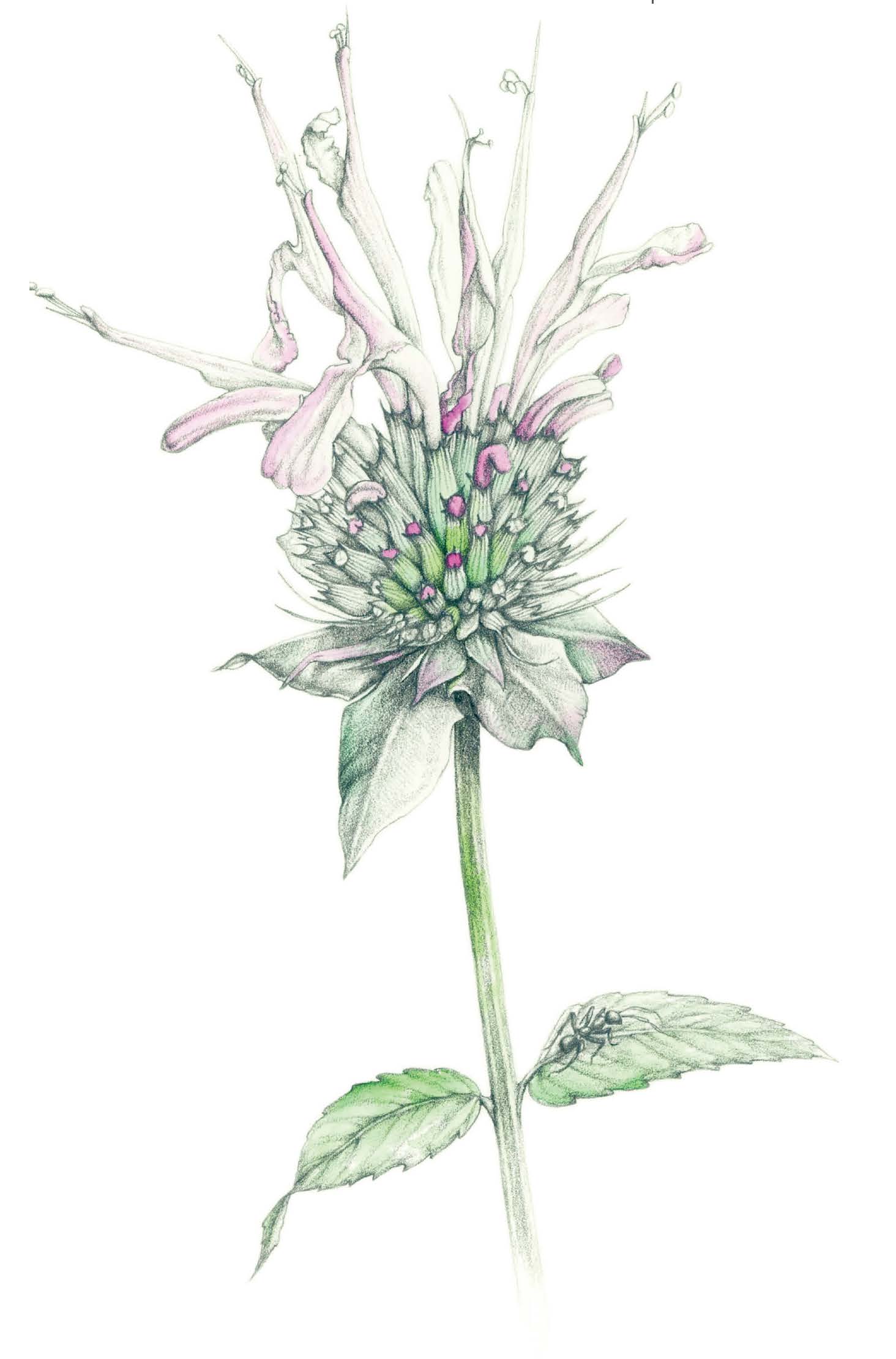
Plant family: Lamiaceae
Other names: Bee balm, wild bergamot, oswego, poaxu (Ho-Chunk)
Region: Native to North America (20 species)
Botanical description: Square stem and opposing leaves, a trademark of the Lamiaceae family. Monarda fistulosa has purple to white flowers; M. didyma flowers are a dark red color.
Grow: Perennial, grows in clay soils; prone to powdery mildew in late summer
Gather: Harvest the blooms and leaves in July or August.
Herbal actions: Antiseptic, carminative, diuretic, antibacterial, antifungal, antiviral, antispasmodic, diaphoretic
Energetics: Pungent and warming
Flower essence: Clearing out stagnant beliefs
Preparations: Dried for teas, in salads, pesto, oxymel recipe, herbal steam
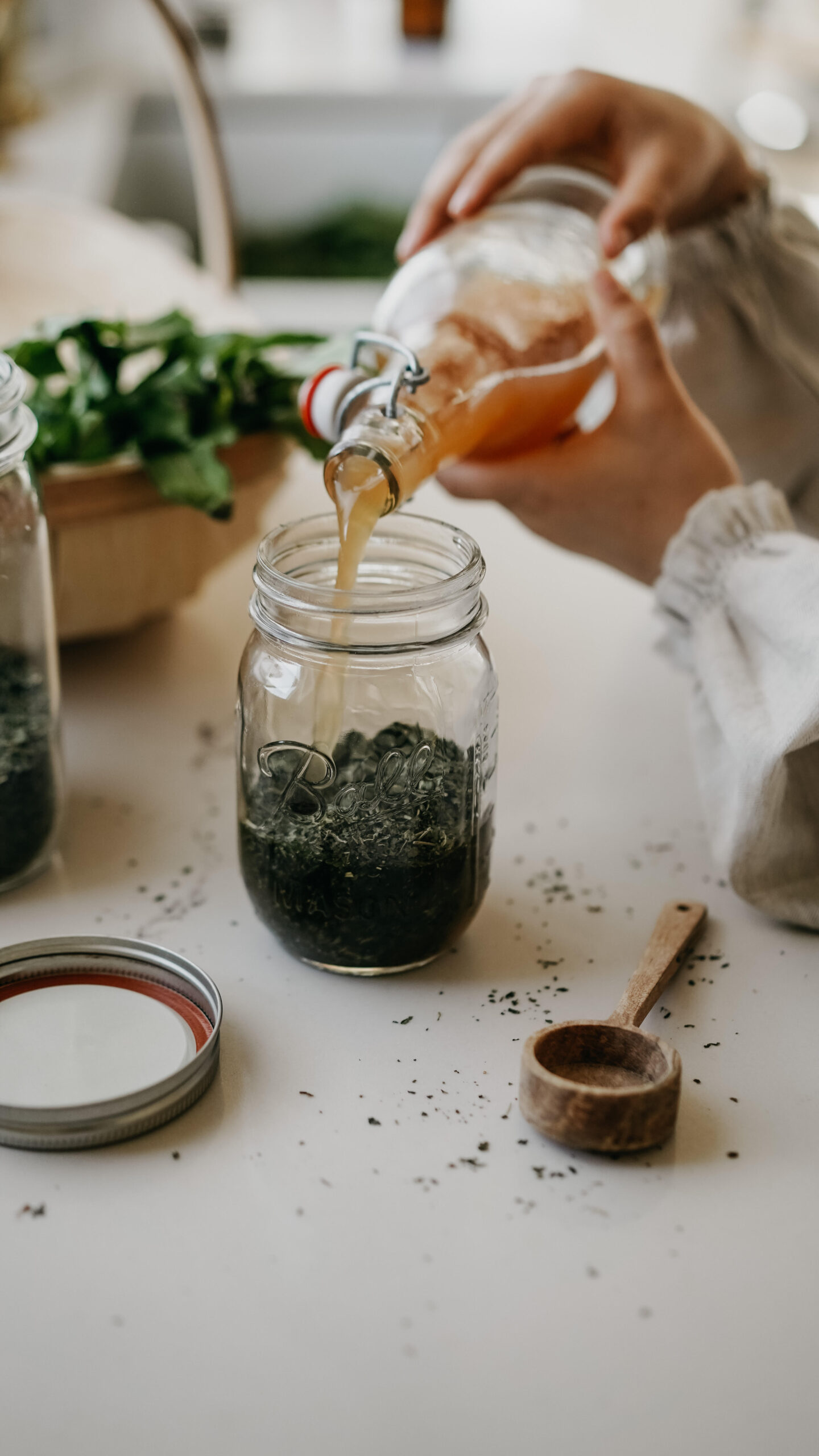
Monarda Oxymel Recipe
Derived from a Greek word meaning “acid and honey,” this oxymel recipe is an herbal preparation using apple cider vinegar and soothing honey. Both have properties to boost immunity and improve digestion as well as getting the herbal constituents of the plant used. Makes: 1 pint jar.
½ cup dried monarda flowers and leaves
1 cup organic apple cider vinegar
1 cup raw honey (local if you can find it)
- Fill a pint-size jar one-quarter full with dried monarda.
- Cover with one part vinegar and one part honey.
- Stir the mixture and cover it with a plastic lid or a piece of parchment paper under a metal lid.
- Shake until well mixed and store in a dark place, shaking every couple days.
- Make this on a new moon and decant on a full moon, or over the course of a 2-week period.
- Strain the mixture through a mesh strainer lined with cheesecloth, squeezing out as much liquid as possible, and pour the strained oxymel into a glass pint-size jar or bottle.
- Label it with date and description and store in a cool dark place for up to 6 months.
- Add a tablespoon or two to warm water during cold and flu season or to salad dressings or to bubbly water on a hot day (remember that a sour taste is cooling).
Note: For more options in making an oxymel recipe, you can experiment with herbs here like garlic, lemon balm, dandelion, nettle, elecampane, mullein, holy basil—the list and experiments are endless.
Purchase a copy of Our Kindred Home that includes this oxymel recipe on Amazon.
